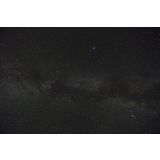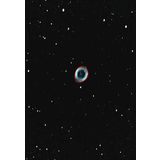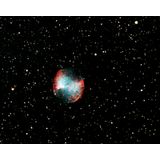
Here are a few of Orion’s top picks for September stargazing:
A Planetary Bonanza in September–In early September Mars, Saturn will put on a show low in the western twilight after sunset. In the morning sky, Jupiter is rising sooner and sooner, dominating the morning sky. Venus also graces the morning sky. If you want more of a challenge, Uranus and Neptune are in excellent position since Uranus reaches its brightest as it nears opposition in September.
The Northern Milky Way–In early September, around 9 PM, the "Summer Triangle" of three bright stars (Vega, Deneb and Altair) is nearly overhead. In the northernmost portion of the Summer Triangle, you’ll see the brightest portion of the northern Milky Way. Point a telescope there and you’ll discover that the fuzzy outlines of the Milky Way will resolve into fields of glittering stars.
Planetary Nebulas in the Summer Triangle–Get a star chart and see how many of these you can find: the famous Ring Nebula (M57) in the constellation Lyra; the Dumbbell Nebula (M27) in Vulpecula; and the "Blinking Planetary," NGC 6826 in Cygnus. Not far outside the western boundary of the Summer triangle is a small, but intensely colorful planetary nebula, NGC 6572.
Another Island Universe–In early September, lurking low in the northeastern sky is another galaxy, separate from our Milky Way, the Great Andromeda Galaxy, or M31. From a dark, moonless sky, M31 is visible with the unaided eye as a slightly fuzzy spot, a pair of 7x50 or larger binoculars will give you a good view and telescopes will reveal some of the dust lanes in the galaxy.
More Extra-GalacticTreats–If you haven’t tracked down "The Whirlpool Galaxy," M51, off the handle of the easily recognizable Big Dipper, do it now while you still can! It will be too low for most people to get a good view after September and you’ll need to wait till late winter or next spring to catch a good view of this picturesque galaxy.
Find Mirach’s Ghost–Go back to Andromeda and locate nearby Beta Andromeda, the bright star to the SE of M31. This star has also been named Mirach. If you have a 6" or larger telescope, take a close look at Mirach, off to side, almost lost in the glare you can see another galaxy, Mirach’s Ghost.
A Brilliant Open Star Cluster–Off the western end of Cassiopeia is the Open star Cluster M52. You can find it with binoculars from a dark sky but the view is definitely better in a telescope. With a larger scope, say 8" or larger, and with the aid of an UltraBlock or O-III eyepiece filter, you may be able to catch views of faint emission nebulas near M52.
Two More Brilliant Star Clusters–If you liked M52, you’ll love the "Double Cluster in Perseus." Lying between Cassiopeia and Perseus is a bright, fuzzy spot in the Milky Way, and a binocular or telescope will reveal two, bright open star clusters. It appears low in the northeast around 9 PM early in September; but, as it climbs as the evening wears on, it becomes a real showpiece.
The Globular Star Clusters of Fall–Almost in a row, off the western side of Pegasus are three globular star clusters that line up almost north-south. These sparkling clusters are, starting with the most northern globular, M15 in Pegasus; M2 in Aquarius and M30 in Capricorn. From a dark sky site you can find all of them in binoculars!
A Dying Star–A challenging, but wonderful object is the Helix Nebula in the constellation Aquarius. Don’t try this from the city; the Helix is big, but really faint. Wait until later in the evening at a dark sky site to catch this planetary nebula, since it will be easier to see the further it rises from the horizon. The best views will be in telescopes of 80mm or larger aperture, at LOW power and with an O-III eyepiece filter.





















